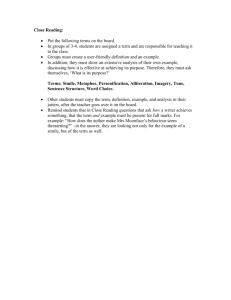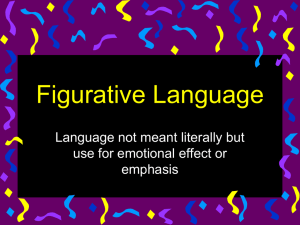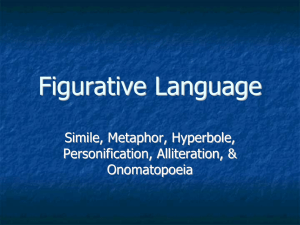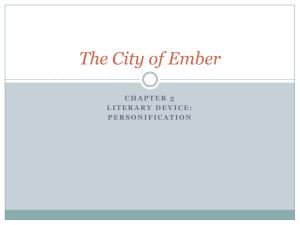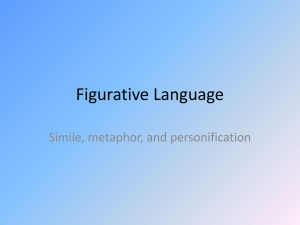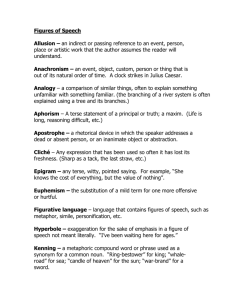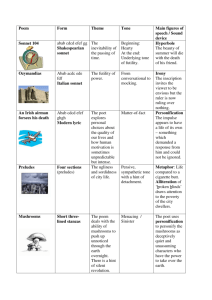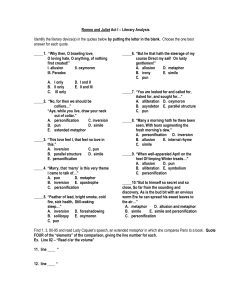Macbeth Rhetorical Devices Worksheet
advertisement
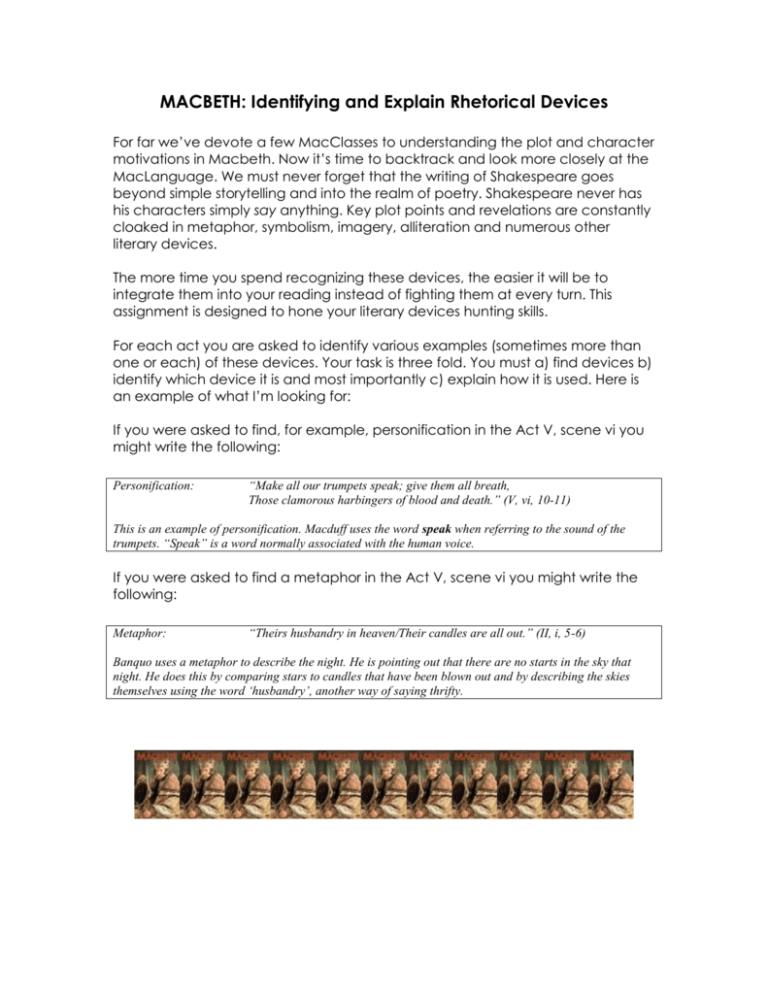
MACBETH: Identifying and Explain Rhetorical Devices For far we’ve devote a few MacClasses to understanding the plot and character motivations in Macbeth. Now it’s time to backtrack and look more closely at the MacLanguage. We must never forget that the writing of Shakespeare goes beyond simple storytelling and into the realm of poetry. Shakespeare never has his characters simply say anything. Key plot points and revelations are constantly cloaked in metaphor, symbolism, imagery, alliteration and numerous other literary devices. The more time you spend recognizing these devices, the easier it will be to integrate them into your reading instead of fighting them at every turn. This assignment is designed to hone your literary devices hunting skills. For each act you are asked to identify various examples (sometimes more than one or each) of these devices. Your task is three fold. You must a) find devices b) identify which device it is and most importantly c) explain how it is used. Here is an example of what I’m looking for: If you were asked to find, for example, personification in the Act V, scene vi you might write the following: Personification: “Make all our trumpets speak; give them all breath, Those clamorous harbingers of blood and death.” (V, vi, 10-11) This is an example of personification. Macduff uses the word speak when referring to the sound of the trumpets. “Speak” is a word normally associated with the human voice. If you were asked to find a metaphor in the Act V, scene vi you might write the following: Metaphor: “Theirs husbandry in heaven/Their candles are all out.” (II, i, 5-6) Banquo uses a metaphor to describe the night. He is pointing out that there are no starts in the sky that night. He does this by comparing stars to candles that have been blown out and by describing the skies themselves using the word ‘husbandry’, another way of saying thrifty. For each example, write out the quote, identify the Act, scene and line and explain why this quote is an example of the literary device. I – i Alliteration Symbolism (not found in dialogue) Paradox/Oxymoron I – ii Simile (3 Examples) Personification (2 Examples) I –iii Paradox/Oxymoron Metaphor Personification I-iv Metaphor Simile I-v Metaphor Personification Simile THIS IS TO BE DONE ON A SEPARATE SHEET OF PAPER, typed or neatly hand written. Due Friday, Sept 21st.
